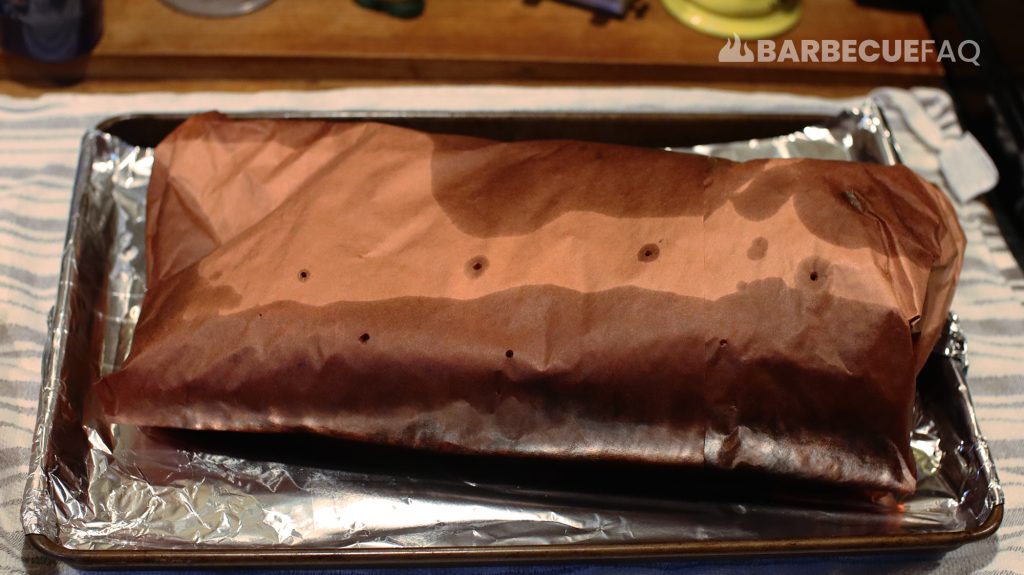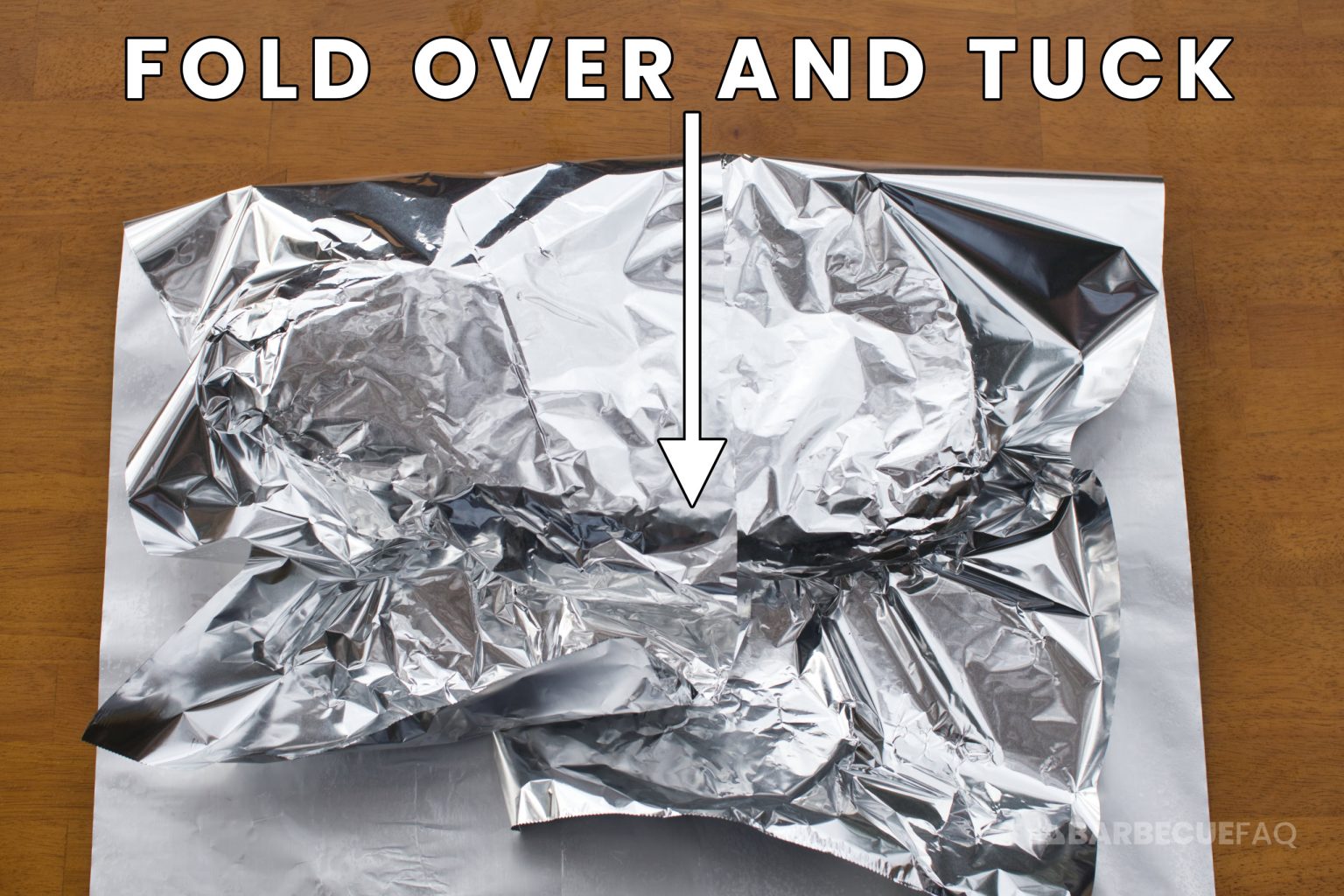Alright folks, let me tell you somethin' straight up—brisket is one of those meats that can make or break your barbecue game. Whether you're a backyard enthusiast or an aspiring pitmaster, mastering when to pull and wrap brisket is crucial. This isn't just about throwing some meat on the smoker; it's about timing, patience, and knowing exactly what your brisket needs to reach that melt-in-your-mouth texture. So buckle up, because we're diving deep into the world of brisket magic.
Now, I know you might be thinkin', "What’s the big deal? Just throw it in the smoker and wait, right?" But no, my friend, there's so much more to it. The secret lies in understanding the stages of cooking, recognizing the signs, and making the right decisions at the right time. And don't worry, we'll break it all down for ya step by step.
By the end of this guide, you'll have all the tools you need to decide when to pull and wrap brisket like a pro. We’ll cover everything from the basics of brisket cooking to advanced techniques that will elevate your BBQ skills. So grab your apron, fire up the smoker, and let's get started!
Here’s a quick rundown of what we’ll cover:
- Understanding Brisket Basics
- The Stages of Brisket Cooking
- When to Pull Brisket
- The Importance of Wrapping Brisket
- Wrapping Methods: Foil vs. Pink Butcher Paper
- Resting Your Brisket
- Pro Tips for Perfect Brisket
- Common Mistakes to Avoid
- Essential Tools for Brisket Cooking
- Frequently Asked Questions
Understanding Brisket Basics
Before we dive into the nitty-gritty of when to pull and wrap brisket, let's talk about the star of the show: the brisket itself. Brisket comes from the lower chest of the cow, and it's a tough cut of meat that's packed with flavor. But because of its toughness, it requires low and slow cooking to break down the connective tissues and render the fat.
There are two main parts of the brisket: the flat and the point. The flat is leaner and more uniform in shape, while the point is fattier and has more marbling. Both parts are delicious in their own right, but they cook differently, so it's important to understand their characteristics.
Now, let's take a look at some key stats about brisket:
| Brisket Cut | Characteristics |
|---|---|
| Flat | Leaner, uniform shape, easier to slice |
| Point | Fattier, more marbling, juicier texture |
Why Brisket Needs Special Attention
Brisket isn't like other cuts of meat. It demands attention and care throughout the cooking process. If you rush it or don't wrap it at the right time, you might end up with a dry, tough piece of meat. That's why understanding the science behind brisket cooking is so important.
Here’s the deal: as brisket cooks, it goes through several stages. The initial stage is the smoking phase, where the meat absorbs all those delicious flavors. Then comes the stall, a phase where the temperature of the meat plateaus. Finally, there's the post-stall phase, where the meat reaches its ideal doneness. Knowing when to pull and wrap brisket is crucial during these stages.
The Stages of Brisket Cooking
Alright, let's break down the stages of brisket cooking so you can understand why timing is everything. Each stage plays a vital role in achieving that perfect brisket, and knowing when to intervene can make all the difference.
Stage 1: The Smoking Phase
This is where the magic begins. During the smoking phase, the brisket is exposed to indirect heat and smoke, which gives it that smoky flavor we all love. The key here is to maintain a consistent temperature in your smoker, usually around 225-250°F.
During this phase, the surface of the brisket starts to form a crust, also known as the bark. The bark is what gives brisket its signature flavor and texture, so don't rush this stage. Let the smoke do its work and develop that beautiful crust.
Stage 2: The Stall
Now we get to the infamous stall. The stall is a phase where the temperature of the brisket stops rising for a while. This happens because the moisture on the surface of the meat starts to evaporate, cooling it down. The stall can last anywhere from a couple of hours to several hours, depending on the size of the brisket and the conditions in your smoker.
Many pitmasters get anxious during the stall and think something is wrong, but trust me, it's a normal part of the process. This is where the decision to pull and wrap brisket comes into play. Wrapping can help speed up the cooking process and prevent the brisket from drying out.
Stage 3: The Post-Stall Phase
After the stall, the brisket starts to cook again as the internal temperature rises. This is where the magic happens—connective tissues break down, fat renders, and the meat becomes tender and juicy. But this stage can take a long time, which is why wrapping is often necessary to ensure the brisket doesn't overcook or dry out.
When to Pull Brisket
Okay, so when exactly do you pull brisket? This is one of the most common questions among pitmasters, and the answer isn't always straightforward. It depends on several factors, including the size of the brisket, the type of smoker you're using, and your personal preference for doneness.
Generally, you want to pull brisket when the internal temperature reaches around 165-170°F. This is the point where the stall typically occurs, and it's a good time to evaluate whether you need to wrap the brisket. Some pitmasters prefer to wait until the brisket reaches 180-190°F before pulling, but this can result in a longer cooking time.
Here’s a quick checklist to help you decide when to pull brisket:
- Check the internal temperature using a meat thermometer.
- Look for signs of tenderness, such as the ability to easily insert a probe.
- Consider the time it has been in the smoker and whether it’s approaching the stall phase.
Using a Probe to Test Tenderness
One of the best ways to determine if your brisket is ready to be pulled is by using a probe. Insert the probe into the thickest part of the brisket—if it slides in easily, your brisket is ready for the next step. If it meets resistance, you might need to let it cook a bit longer.
The Importance of Wrapping Brisket
Wrapping brisket is a crucial step in the cooking process, and it can make or break your final product. Wrapping helps retain moisture, speeds up cooking, and prevents the brisket from drying out during the post-stall phase.
There are two main methods for wrapping brisket: foil and pink butcher paper. Each method has its pros and cons, and the choice ultimately comes down to personal preference and the type of brisket you're cooking.
Wrapping Methods: Foil vs. Pink Butcher Paper
Foil: Foil wrapping, also known as the "Texas crutch," is a popular method that completely seals the brisket, creating a steamy environment that helps break down tough fibers. However, foil can also trap too much moisture, which can lead to a soggy bark.
Pink Butcher Paper: Pink butcher paper, on the other hand, allows some moisture to escape while still retaining enough to keep the brisket juicy. This method is great for preserving the bark while still speeding up the cooking process.
Here’s a quick comparison:
| Method | Pros | Cons |
|---|---|---|
| Foil | Speeds up cooking, retains maximum moisture | Can make the bark soggy |
| Pink Butcher Paper | Preserves the bark, retains moisture without sogginess | Slightly slower than foil |
Resting Your Brisket
Once you've pulled and wrapped your brisket, it's time to let it rest. Resting is an essential step that allows the juices to redistribute throughout the meat, ensuring a tender and juicy final product.
Wrap your brisket in foil or butcher paper and place it in an insulated cooler or on a wire rack. Let it rest for at least an hour, but two to three hours is even better. During this time, the meat will continue to cook slightly and become even more tender.
Why Resting Matters
Resting is important because it allows the juices to settle and redistribute throughout the brisket. If you slice the brisket too soon, all those delicious juices will run out, leaving you with a dry piece of meat. By letting it rest, you ensure that every bite is as juicy and flavorful as possible.
Pro Tips for Perfect Brisket
Here are a few pro tips to help you achieve that perfect brisket:
- Season your brisket generously with a dry rub to enhance the flavor.
- Use a high-quality smoker and maintain a consistent temperature throughout the cooking process.
- Monitor the internal temperature closely and be ready to pull and wrap at the right time.
- Don't rush the resting phase—let the brisket rest for at least an hour to ensure maximum juiciness.
Advanced Techniques
For those looking to take their brisket game to the next level, here are a few advanced techniques to try:
- Inject the brisket with a flavorful marinade before cooking to add extra moisture and flavor.
- Experiment with different types of wood for smoking to create unique flavor profiles.
- Try reverse searing, where you finish the brisket on high heat to achieve a crispy bark.
Common Mistakes to Avoid
Even the best pitmasters make mistakes from time to time. Here are a few common mistakes to avoid when cooking brisket:
- Not letting the brisket rest long enough, resulting in dry meat.
- Overcooking the brisket, which can lead to a mushy texture.
- Using too much smoke, which can overpower the natural flavors of the meat.
How to Avoid These Mistakes
Here’s how you can avoid these common mistakes:
- Always let the brisket rest for at least an hour before slicing.
- Monitor the internal temperature closely and pull the brisket at the right time.
- Use smoke sparingly and focus on maintaining a consistent temperature in your smoker.
Essential Tools for Brisket Cooking
Having the right tools can make all the difference in your brisket cooking journey. Here are a few essential tools you’ll need:
- A high-quality smoker with temperature control.
- A digital meat thermometer to monitor the internal temperature.
- Foil or pink butcher paper for wrapping.
- An insulated cooler for resting the brisket.
Investing in Quality Tools
While you don’t need to break the bank, investing in quality tools can significantly improve your results. A reliable smoker and thermometer will give you more control over the cooking process, leading to more consistent and delicious brisket.
Frequently Asked Questions


